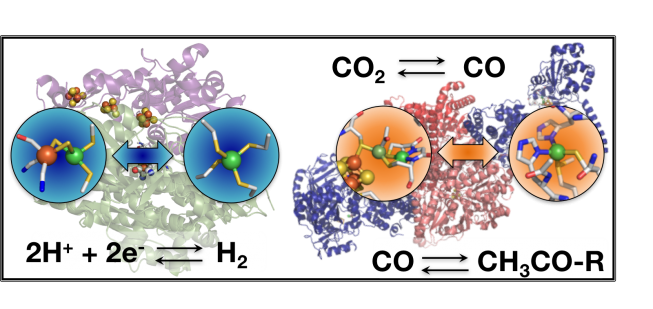Abstract:
Nature has evolved diverse systems to carry out energy conversion reactions. Metalloenzymes such as hydrogenase, carbon monoxide dehydrogenase, acetyl coenzyme A synthase, and methyl coenzyme M reductase use earth-abundant transition metals such as nickel and iron to reversibly generate and oxidize small-molecule fuels such as hydrogen, carbon monoxide, acetate, and methane. These processes are implicated in chemoautotrophic origins of life and play a key role in the metabolisms of ancient bacteria and archaea. However, while these enzymes are highly functional within their native environment, most are costly to isolate, sensitive to external conditions, and generally poorly suited for large-scale application. Additionally, the multimetallic active sites and auxiliary cofactors obscure distinguishing spectroscopic features and render detailed analyses challenging. As a result, the molecular mechanisms of catalysis remain relatively poorly understood, thwarting efforts to build biomimetic synthetic systems that act with the efficacy of native enzymes.
We have approached this problem from a metalloprotein engineering perspective. Azurin and rubredoxin are two of the most well studied proteins within the bioinorganic community. Both are robust platforms, known for their unique spectroscopic features and representative coordination geometries. By introducing non-native metals and redesigning the primary and secondary coordination spheres, we have been able to install novel activity into these simple electron transfer proteins, including catalytic hydrogen evolution, carbon dioxide fixation, and carbon monoxide activation. Optical, vibrational, and magnetic resonance spectroscopic techniques have been used in conjunction with density functional theory calculations to probe the active-site structures across different states in order to determine the catalytic mechanisms. These findings will be discussed in the context of identifying the fundamental principles underlying highly active native enzymes and applying those principles towards engineering effective model metalloproteins for energy conversion reactions.

